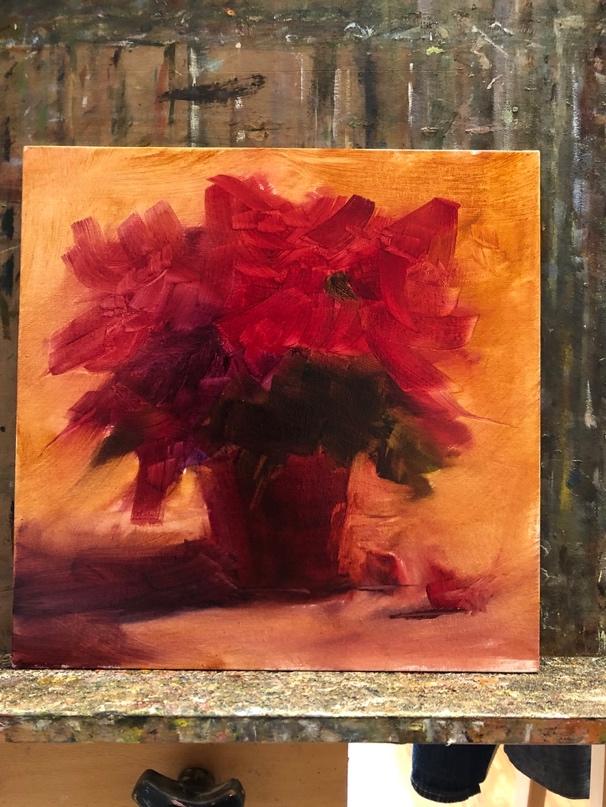On the Easel: For art collectors, a behind-the-scenes look at how one contemporary artist creates a painting helps us appreciate even more the vision and skill it takes to do this, and makes us even more informed about why we buy art to enjoy at home.
On the Easel: A Timely Painting of a Poinsettia

Paint it Red!
By Pat Fiorello
One aspect of painting flowers that I enjoy is finding the different types available only for a season. This time of year, at least in North America, poinsettias are a holiday favorite available in abundance. Each year I try to paint some while I have access to the live plants.
I spied the beautiful light on this plant on an indoor porch but was not interested in painting it as the scene was, so I simplified the background in a neutral tone in Photoshop and thought it might be fun to try a square format.

I started the painting very loosely with an underpainting using only transparent oil paints. For the reds, I used mainly alizarin permanent plus touches of magenta, ultramarine blue, and even transparent oxide brown here and there just to vary it up.


Knowing I wanted a neutral background, I put in a warm underpainting for the background with the intent of coming in with a cooler grey tone on top of it later. At this point, with the underpainting blocked in, the edges of the underpainting are very soft and it’s easy to feel a bit lost, so I found key shapes, especially in the lights, by scraping out with a Kemper wipe-out tool. Adding in the background also helped to negatively paint around the petal shapes.



Finally, I reinforced the dark petals in shadow with more of the alizarin dark mixture initially laid down. For the petal shapes in light, I used cadmium red light. One tip I often give my students is to avoid adding white to red unless you want pink. White will make the reds cooler, less vibrant, and even chalky. I’d prefer to lighten the red with another color, like orange or yellow if needed.
In many cases, the value and temperature relationship between cad red light and the alizarin (with some of the other dark transparent colors mentioned above) will be enough to read light and shadow without having to add any white at all. I added a few small details in the center of the main poinsettia and some leaves in light and shadow and called it a day.

Happy Holidays!
Related > Pat’s “Vibrant Flowers” painting video is available at painttubetv.com.
View more artist and collector profiles here at FineArtConnoisseur.com.







